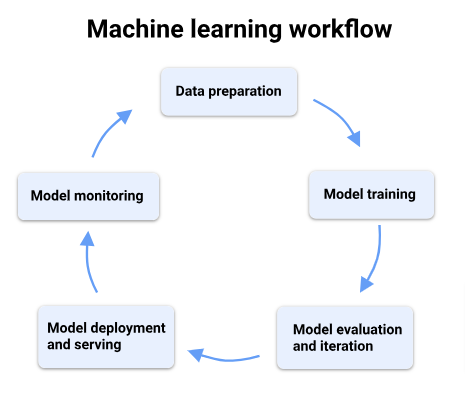How New Technologies are Enhancing IVF Success in India
Over the past several years, India has emerged as a key global market for fertility treatments and services, IVF, and surrogacy. Reproductive technology has developed a lot and this has improved fertility treatments since the treatments are now easier and more effective. This article aims at discussing the advancements in IVF technology revealed recently, these advancements’ efficacy, the effects on patients, and the future of IVF treatments in India. It also discusses some of the ethical implications that come with these advancements.
Technological Advances in IVF
Embryo Freezing (Vitrification)
The procedure of freezing embryos, especially through vitrification, has come a long way in IVF treatments. Vitrification is another method of freezing but at a very fast rate to prevent the formation of small crystals, which can be harmful to the embryo. This technology facilitates the storage of embryos for later use, thus providing couples with more leeway in planning for the baby and also increasing the likelihood of success in subsequent IVF cycles. Frozen embryos are known to yield higher success rates since these embryos can be transferred throughout the natural or least hormonally stimulated cycle to minimize the effect of ovarian hyperstimulation syndrome.
Preimplantation Genetic Testing (PGT)
Preimplantation genetic testing (PGT) is an advanced process that aims at diagnosing embryos for any genetic disorder before the embryos are placed in the uterus. It assists in the selection of embryos with better chances of implantation in the uterus, thus leading to better chances of avoiding miscarriage and genetic failures. For instance, in India, there are conditions like thalassemia and sickle cell anemia and therefore, by using PGT, the couple stands to benefit from avoiding such conditions. PGT, when combined with IVF, has significantly enhanced success outcomes in women who are of previous advanced age or those experiencing recurrent miscarriages.
AI-Enhanced Embryo Selection
AI technology is rapidly growing, especially in the area of reproductive health. Machine learning algorithms in AI-assisted embryo selection involve the use of 2000 parameters derived from the images of the embryos to assist the embryologist in identifying the best embryos to transfer. This specific technology is very helpful in terms of increasing the accuracy in choosing the embryos to be implanted, minimizing mistakes that may be committed by humans and subsequently increasing the overall success rates of IVF cycles. AI’s ability to foresee which embryo stands the best chance due to factors like morphology and development rate remains a powerful tool, and from the clinical trials, it performs well.
Time-Lapse Imaging
Imaging systems for time-lapse are used to observe embryo progression with no interference from the culture conditions. This technology gives great information on the developmental process of embryos, making it easier to determine which of the embryos must be transferred to the uterus. Time-lapse imaging, which is implemented by IVF centers across India, has seen a significant rise as it assists in an enhanced success rate and better understanding of embryonic development.
Impact of Technology on Success Rates
These complex technologies have helped to improve IVF success rates, in addition to helping patients in complicated cases. The use of embryo freezing without a reduction in the embryos’ viability means that patients can undergo multiple cycles of IVF with a high overall probability of conception. Preimplantation genetic testing has helped to lower the prevalence of miscarriages and genetic ailments that affect the population, hence increasing the number of live births. Preimplantation genetic diagnosis, along with advanced AI, has made embryo selection even more accurate, in addition to time-lapse imaging for better embryo selection before transfer.
Each of these is positive for couples who are interested in IVF in India, as it enhances the probability of realizing a successful pregnancy in situations where earlier attempts have not yielded positive outcomes. These technologies tend to be affordable and this explains why India has become a center of attraction for fertility treatments. IVF cost vary widely depending on the clinic and the specific technologies used, but the inclusion of advanced techniques like PGT and AI-enhanced embryo selection has made the investment worthwhile for many couples.
Patient Experiences

The evolution of IVF technology has not only improved success rates but has also enhanced the overall patient experience. The fact that embryos can be frozen helps patients in a number of ways, as it eliminates stress and physical fatigue associated with multiple cycles of ovarian stimulation. Preimplantation genetic testing (PGT) is known to offer assurance, thus eliminating any concern over a specific genetic disease. Better selection of embryos and time-lapse technology in the embryology laboratory provide the patients with a clear picture and confidence in the treatment being offered since only the best embryos are selected for implantation.
Moreover, the widespread availability of these technologies has made fertility treatment affordable for everyone. With this technology, individuals have the ability to access the latest methods of treatment without having to go overseas, which helps ease the process of IVF.
Future Trends
- AI Integration Beyond Embryo Selection: It is also forecasted that AI technology is capable of expanding its utilization in other aspects of fertility treatments like ovarian stimulation and sperm selection methods. This could lead to even more tailored and accurate medication plans in relation to each patient’s circumstances.
- Non-Invasive Embryo Assessment: Other possibilities include the creation of procedures for diagnosing embryonic suitability that do not require invasive manipulations. There is an attempt to look for biomarkers in the culture medium, a technique that would enable assessment of embryo quality without the use of a biopsy that can harm the growing embryos.
- Increased Accessibility and Affordability: Advancements in technology also hold out the possibility of bringing down the costs of most IVF procedures that are considered to be high today. Such a trend could well bring affordable and better quality fertility care to common people and potentially help to bring down the IVF cost and make these treatments more accessible to every patient.
Ethical Considerations

- Bias in AI Algorithms: There are issues associated with potential bias that results from the application of AI in the selection of embryos. Making artificial intelligence systems transparent and unbiased can help people trust the technology and receive justified treatment.
- Genetic Selection and “Designer Babies”: Preimplantation Genetic Testing (PGT) raises ethical issues with regard to the selection of the embryos by their genes. The issue of selecting embryos for other reasons apart from health concerns as it leads to the creation of what is referred to as the ‘designer babies’ is still debatable and should therefore be adequately controlled.
- Commercialization and Exploitation: The globalization of IVF and surrogacy in India, in particular due to the relatively low price for surrogacy in Delhi and other regions, prompts discussion about the rights of surrogates. The surrogates should be treated ethically and paid according to their worth, while legal frameworks should guard against exploitative practices against these women.
The technological advancements in IVF have undoubtedly enhanced the success rates and patient experience of fertility treatments in India. From embryo freezing and PGT to AI-enhanced embryo selection and time-lapse imaging, these innovations have made IVF more efficient, accessible, and successful. As India continues to lead in the field of reproductive medicine, it is essential to address the ethical considerations that accompany these advancements to ensure that the benefits of these technologies are realized in a fair and responsible manner.










